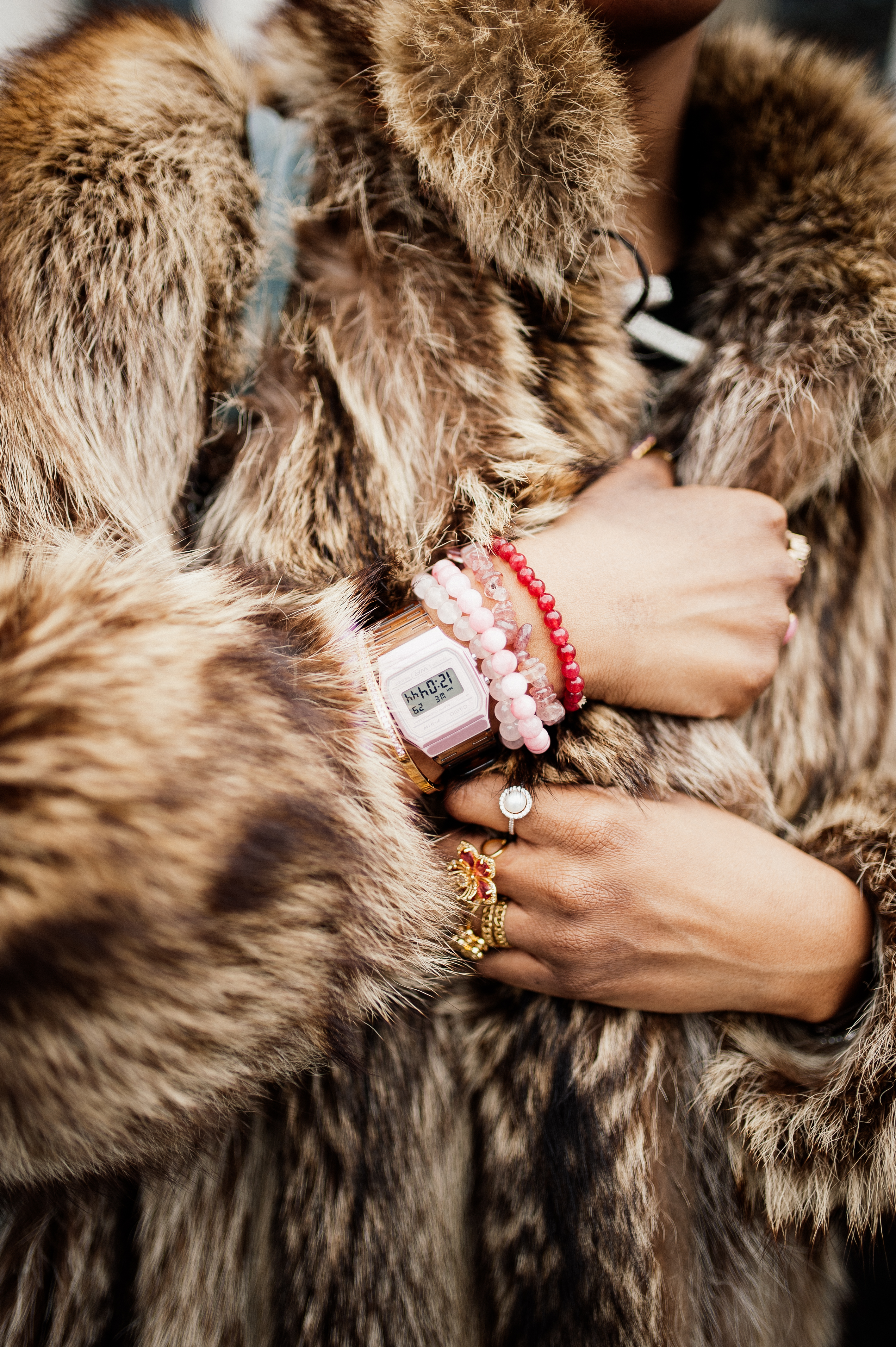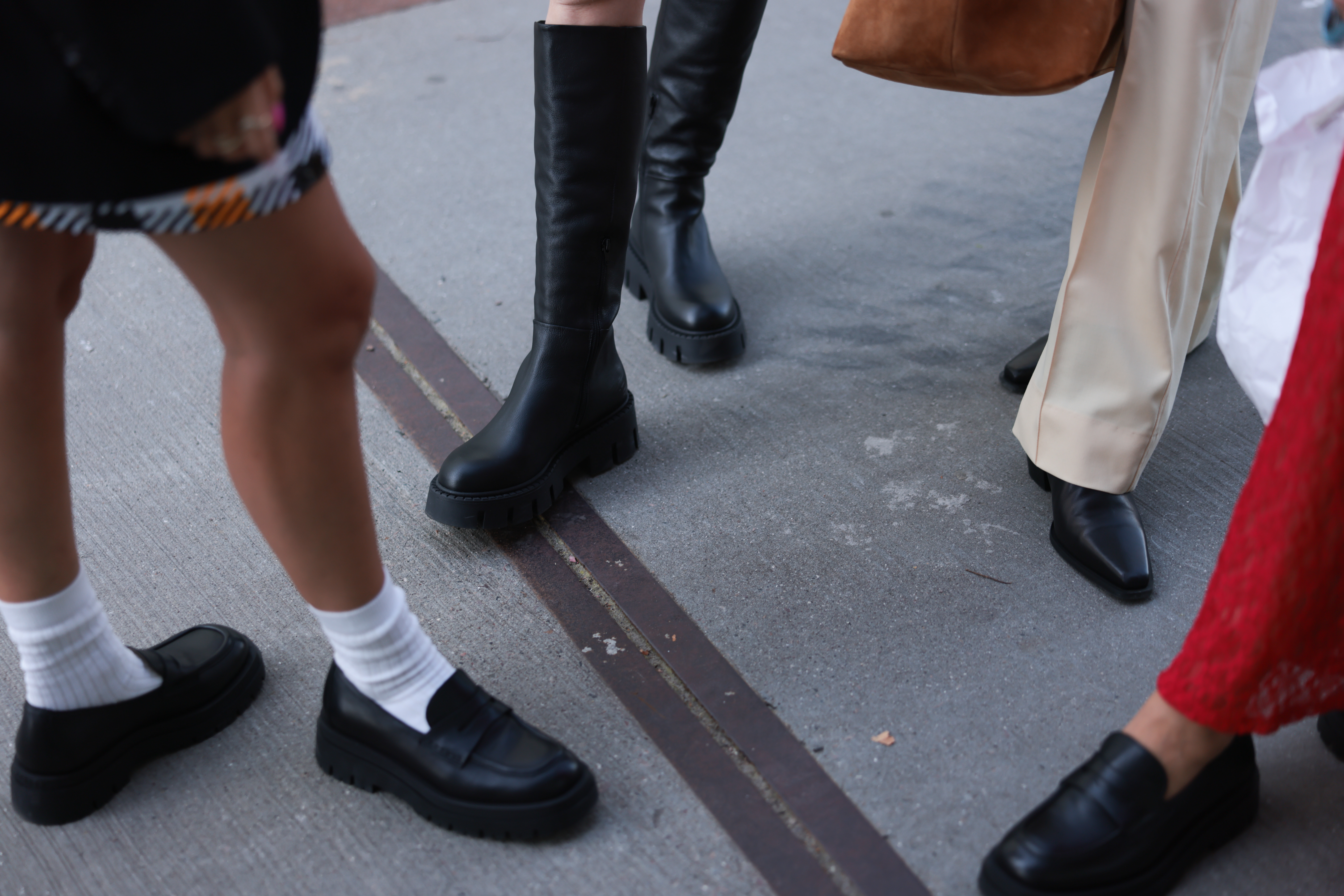How Trump's Tariffs Will Affect Your Closet, Explained
Prepare for higher prices.


Ever since President Donald Trump was declared the winner of the 2024 election, the internet has been a little less concerned with contrast makeup theory and a little more fixated on recession indicators in fashion. Specifically, the universal tariffs on imported goods Trump touted as a major agenda for a second term in office; signed into policy on March 3; amplified into sweeping taxes on China, the European Union, and more, announced on April 2; and finally put on a 90-day pause (with some exceptions) on April 9.
Trump's proposed tariffs on the campaign trail—between 10 and 20 percent for all imports and up to 60 percent for goods from China—first bubbled up without much fanfare. But in the final days before the election and the immediate aftermath, alarm bells started ringing all across the internet, from panicked fashion obsessives and corner office CEOS to everyday, average citizens. By the time the April 2 "Liberation Day" tariffs arrived, economic experts warned CNBC they would have "horrendous" effects on global trade—trickling all the way down to everyday shopping. Sure enough, the stock market immediately suffered. And businesses—especially small, women-led companies—worried they would pay the policy's true cost.
Some people misinterpret tariffs as a tax other countries pay, but they're actually billed to the companies pushing the products. And U.S. consumers buy a lot of products from abroad. So, to foot the potential tariff bill, brands are expected to raise the prices we all pay at the online checkout or IRL cash register. The situation has all the makings for a retail reckoning: on where our clothes are made and what we choose to buy. As one viral tweet by the costume designer Emma Scott went, "Genuinely curious what's going to happen when a society that buys everything from Amazon, Walmart, and Temu realizes what a 60 percent tariff on Chinese goods looks like." Turns out, the latest tariff on Chinese goods is up to 125 percent.

A guest at Fashion Month wears goods that may all be impacted by President Trump's tariffs.
There's a lot more at stake than sticker shock. As fashion journalist Amy Odell wrote in her newsletter, Back Row, "The price hikes would create a cascade of consequences for consumers who buy clothes, which in turn could adversely affect the fashion industry in many ways."
Before the incoming Trump administration finalized a tariff plan, lobbyists and brands were searching for loopholes, and experts were painting a picture of what 2025 tariffs could mean for all our closets. Then, President Trump said in a Truth Social post on Monday, Nov. 25, that 25 percent tariff on goods imported from Mexico and Canada would be implemented his first day in office. He also promised a tariff of at least 10 percent on goods from China—with the potential to raise it higher.
It took a few more weeks after the inauguration, but on Mar. 3, 2025, President Trump first announced 25 percent tariffs on imports from Mexico and Canada, and doubled the tariff on imports from China to 20 percent. (At least two nations, Canada and China, have retaliated with tariffs of their own, per NPR.) By April, tariffs on China increased to 34 percent, tariffs on the European Union reached 20 percent, and countries where much of the fashion industry bases its production skyrocketed as high as 49 percent. Global markets trended downward in response, and Trump reversed course by April 9: The President announced only a blanket 10 percent tariff would remain in effect for most nations, for a 90-day grace period while final rates were negotiated. Meanwhile, China would be stuck with the aforementioned 125 percent tax.
The President's Oval Office tax announcement might seem far away from the runways of Fashion Month. But it's bound to have an impact on the collections produced later this year—and goods that are already on shelves. Instead of bringing your Economics 101 textbook out of storage, read on for a breakdown of exactly what tariffs during the second Trump presidency are going to entail and how they'll affect your shopping habits.
Get exclusive access to fashion and beauty trends, hot-off-the-press celebrity news, and more.
What are tariffs, again?
This is the first question on everyone's mind. Searches for "tariff" and "Trump's tariff plan" spiked a combined 6,150 percent in the days following the U.S. election, while searches for "who pays tariffs" are up 350 percent.
By the most basic definition, tariffs are government-imposed taxes on imported or exported goods paid by the company moving the products around. Import tariffs on clothing, appliances, technology, and other retail categories are the most common in the United States. They're often implemented to encourage domestic manufacturing and job growth. In fashion, that would mean more products with "Made in the USA" tags.
But few products, whether we're talking trendy sneakers or tote bags, are made from materials sourced, assembled, and shipped from a single location. Meaning, import tariffs don't always produce the intended results. Companies often cut internal costs or raise the prices you see at the mall (or online) to pay tariffs immediately to avoid the even higher costs of re-configuring their entire business. Those fees don't just include materials to make goods: They also involve re-training workforces to produce those items and building infrastructure to crank them all out. Simply put, import tariffs are much more expensive than a one-time tax.
What is Trump's tariff plan?
The Trump Administration's approach to tariffs has escalated from the campaign trail to the present day, where even uninhabited islands near Antarctica were hit with taxes.
President Trump made several tariff promises on the race back to the White House. First, that all goods imported to the United States would be subject to a 10–20 percent tariff. Second, that a 60 percent tariff would be applied to all imports from China. And third, all goods imported from Mexico would be hit with a 25 percent (or greater) tariff. He positioned the policy as a way to raise money for the federal government, as well as a tactic for retaliating against other nations. "Other countries are going to, finally, after 75 years, pay us back for all that we’ve done for the world," President Trump said onstage during the September debate against Kamala Harris.
Exactly when and how potential tariffs will be implemented weren't immediately announced. “The vision is there, but the game plan is not,” a source involved in the incoming Trump administration's economic policies told CNN.
By Nov. 25, there were more than concepts of a tariff plan. Trump posted on his social media app, Truth Social, that he would impose a 25 percent tariff on imports from Canada and Mexico, plus at least a 10 percent tariff on imports from China, on his first day in office. The president-elect framed the decision as retribution for streams of illegal drugs reportedly moving into the United States. Trump also added that tariffs on Chinese imports could increase. A representative for the Chinese embassy in Washington, D.C., responded that "No one will win a trade war or a tariff war."
President Trump didn't quite keep his promise. The tariffs came into effect on Mar. 3, 2025, 43 days into his second term. Taking effect just after midnight, they included the aforementioned 25 percent tax on imports from Canada and Mexico, plus an increase to a 205 percent tax on imports from China.
In remarks at the White House, Trump called the tariffs a "very powerful weapon that politicians haven’t used because they were either dishonest, stupid or paid off in some other form." The US stock market plummeted in response, per the BBC, and world leaders were quick to condemn the policy. Canadian President Justin Trudeau said taxing close neighbors and allies was a "very dumb thing to do."

Goods from EU nations, like this fashion week guest's Bottega Veneta clutch, will be hit with a 20 percent tariff.
But the tariff plans still weren't over. At the White House on April 2, President Trump revealed "Liberation Day" tariffs, a sweeping plan that set 10 tariffs as a "baseline" across more than 180 nations that trade with the United States, per CNBC. Some of the highest tariffs were placed on major players in the fashion industry, including the European Union (subject to a 20 percent tariff) and China (receiving a 34 percent tariff).
Governments around the world quickly responded to the plan, calling it "not the act of a friend" (per Australian Prime Minister Anthony Albanese) and worth fighting "with force" (per Canadian Prime Minister Mark Carney). Economic experts also saw the plan as the start of a global trade war. Stock markets tumbled on April 3, with the DOW Jones falling 2.9 percent, or 1,200 points, at the opening bell. Stocks for retail-oriented brands including Walmart, Nike, and Lululemon led the global declines, per Reuters.
Panic set in across the retail industry following the "Liberation Day" tariffs' unveiling. In interviews with Marie Claire, several small businesses noted that tariffs would almost certainly result in higher costs being passed on to customers. The stock market tumbled as bigger businesses' leaders expressed their concerns—and JP Morgan went so far as to predict a 2025 recession. By April 9, President Trump appeared to roll back his plan (and attempt to assuage worried businesses): He announced a 90-day pause on major tariffs, leaving a baseline 10 percent tax in place. China was the only exception—still subject to a tariff of more than 100 percent.
Okay, so how do those tariffs affect my shopping habits?

Clothing, shoes, accessories—if they're imported to the United States from Canada, China, or Mexico, they're going to experience price increases.
There are a lot of exciting 2025 trends to look forward to this year, but the barrier to participating in them will get even higher as tariffs go into effect. So will shopping for basic necessities across clothing, furniture, appliances, and more.
Business of Fashion released a sweeping report on the effects of the Trump Administration's "Liberation Day" tariffs shortly after their debut on April 2. Nations where leading fashion brands source most of their raw materials and produce their goods—including Cambodia, Vietnam, and Bangladesh—were initially targeted with some of the highest tariffs. (Cambodia's are a whopping 49 percent.) China, one of the biggest exporters of fashion goods, was hit with 34 percent—which then increased to 125.
Luxury brands who rely on tiny workshops in Ubrique, Spain, or the hills of Italy aren't faring much better. Business of Fashion reports designer empires like the luxury groups Kering and LVMH will see their net income decline by between 8 and 14 percent without mitigating the tariffs.
The hurt won't all be absorbed by big business. A study by the National Retail Federation found that proposed tariffs could decrease Americans' spending power by up to $78 billion each year. The study suggested that costs retailers need to absorb will be too high for them to pay alone, so prices we all see at the store will rise.
"Since tariffs are essentially a tax collected once merchandise crosses another country's borders, retailers that import any merchandise from China will be impacted more severely," says Shawn Grain Carter, associate professor of business management at FIT.
"Made in China" covers almost every corner of your closet, from cotton dresses and T-shirts to running shoes and even designer bags. "Since China was accepted into the WTO [World Trade Organization] in 2001, they became the dominant player in fashion manufacturing across most fashion categories in the majority of price points," Professor Grain Carter explains. "According to 'Good On You,' 65 percent of fashion in the world is produced in China."
Prepare for even middle-class fashion and affordable brands to feel more out-of-reach. Professor Grain Carter notes that fast fashion is an extremely price-sensitive category, and "consequently, Zara, H&M, and others will have to determine the best ways to absorb these tariffs."
Of course, fashion can make internal cost cuts to avoid price hikes. However, something else might be sacrificed to save, such as the quality of the fabric, the sheen of the finishes, or even the packaging arriving on your doorstep.
In the long term, prices could stabilize as retailers consider rebuilding their supply chains. "Obviously, sourcing goods in other countries could be less expensive as a result," Professor Carter says. "This would also make manufacturing more competitive among multiple players, which in turn could stabilize retail prices for consumers."
Are Trump's tariffs only going to affect new merchandise?

Designer goods imported from the aforementioned countries will also be on the price-hike block.
Not even a used Birkin bag or previously loved Goyard tote is safe from the impacts of tariffs. The U.S. pre-owned luxury market also stands to shift from policies targeting brand-new merchandise—starting with more price increases.
"Prices in the secondary market rise and fall in line with prices in the primary market," says Sarah Davis, founder and president of Fashionphile. "So when brands who import to the U.S. then face tariffs on those goods, they often hike the retail price in line, which means resale prices will also increase. Retail and resale prices are indirectly hitched to each other."
Some luxury resellers acquire their collection of used Lady Diors and Louis Vuitton Neverfulls wholesale from Asia's secondary market, Davis notes. If vintage gems are sourced overseas, they'll be suseptible to even higher prices. "Tariffs on the import of these goods would mean higher acquisition expenses for U.S. resellers, who would be forced to pass that increase along to the customer if they want to maintain their margins," she explains.
If you want a bag in 2025 with a price closer to 2024 rates, consider companies that source directly from their customers or peer-to-peer platforms. These might be exempt from the same headwinds facing the rest of the market. "The fact that the luxury brands may have to significantly raise prices in their own stores and department stores, could funnel even more consumer interest in more affordable channels, like resale," Davis says. "The consumer has already been vocal in their frustration in the increasing prices that we've seen in the luxury sector in the last couple years. Even higher prices and limited availability could lead to a breaking point for some consumers who would seek refuge in softer pricing alternatives in resale."
So...should I stop shopping now that Trump's tariffs are in effect?
Whether your wish list is filled with the best designer tote bags and luxury gifts or just the nicest T-shirts Amazon has to offer, the time to hit "Order" was last year. There's still uncertainty as to how long the tariffs will last—though decreeing "tariff" the "most beautiful word in the dictionary" sure makes it sound likely. Still, expert insights and statements from Donald Trump's camp indicate he's not backing down. That means the year will likely bring higher prices or lower product quality (or both).
Editor's note: This post was updated on November 26, 2024, with information about Donald Trump's new tariff plans. It was updated a second time on March 3, 2025, with the tariffs that were placed into effect. It was updated a third time on April 3, 2025, with details on expanded tariff plans from the Trump administration. It was updated again on April 9, 2025, with details on Trump's 90-day tariff pause.

Halie LeSavage is the senior fashion and beauty news editor at Marie Claire. She is an expert on runway trends, celebrity style, and emerging brands. In 8+ years as a journalist, Halie’s reporting has ranged from profiles on insiders like celebrity stylist Molly Dickson to breaking brand collaboration news. She covers events like the Met Gala every year, and gets exclusive insight into red carpet looks through her column, The Close-Up.
Previously, Halie reported at Glamour, Morning Brew, and Harper’s Bazaar. She has been cited as a fashion and beauty expert in The Cut, CNN Underscored, and Reuters. In 2022, she earned the Hearst Spotlight Award for excellence and innovation in fashion journalism. She holds a bachelor’s degree in English from Harvard College.